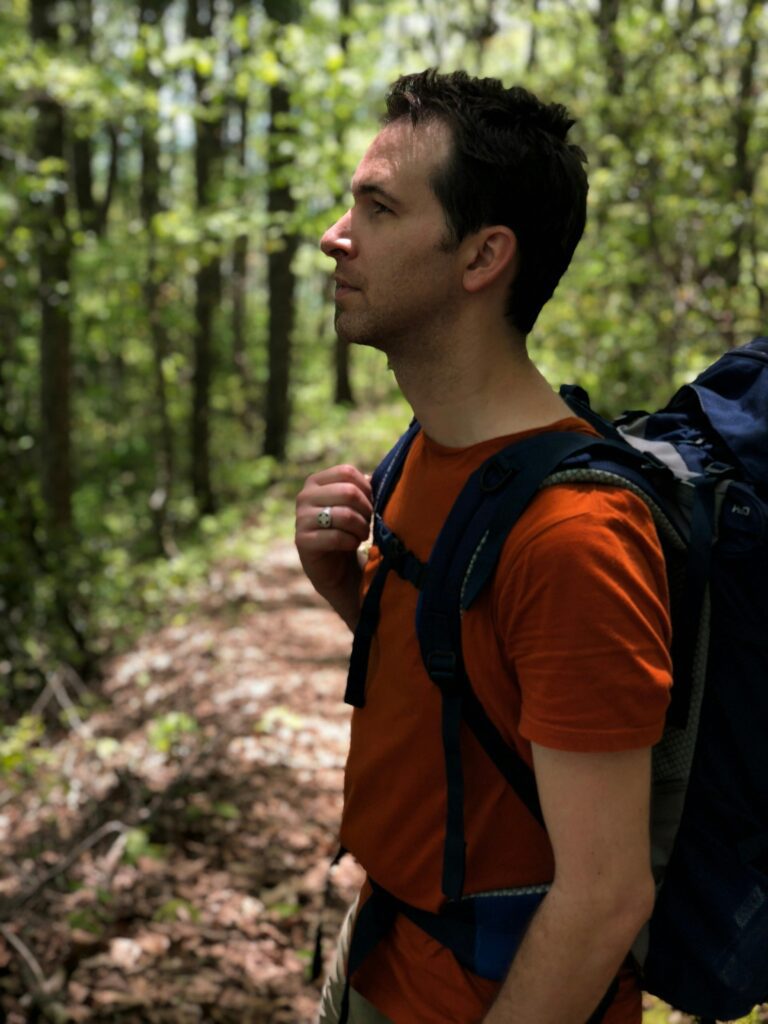Table of Contents
Welcome to Hiking
Welcome to the thrilling world of hiking! If you’re reading this, you’re likely ready to take your first steps into the great outdoors, exploring trails that offer not only breathtaking views but also a chance to reconnect with nature. Hiking is more than just a physical activity; it’s a journey that nurtures the soul, sharpens the mind, and strengthens the body.
For many, the call of the wild is irresistible. From the rustle of leaves underfoot to the crisp, fresh air, hiking provides an escape from the hustle and bustle of daily life and a unique opportunity to explore the beauty of our natural landscapes. Whether you’re seeking solitude, adventure, or a fun way to exercise, hiking offers something for everyone.
This guide is designed to help you, a beginner hiker, understand the essentials of hiking, and make informed decisions about where to go, what to bring, and how to stay safe. As we walk through these initial steps, you’ll discover just how rewarding this activity can be. So lace up your boots, pack your spirit of adventure, and let’s embark on a journey that promises high rewards and unforgettable experiences.
In the next section, we’ll dive into how to choose your first trail, ensuring your debut hiking experience is both enjoyable and inspiring.
Choosing Your First Trail
Selecting the right trail is your first step to a successful hiking adventure. As a beginner, it’s important to choose a path that not only matches your physical ability but also ignites your interest and excitement. Here’s how to find that perfect trail:

Start Simple: Look for trails labeled as ‘easy’ or ‘beginner’. These usually have less elevation gain and smoother paths, ideal for getting a feel for hiking without overexerting yourself. Websites like AllTrails.com provide detailed descriptions and user reviews that can help you gauge the trail’s difficulty level and scenic value.
Consider the Scenery: What motivates you to hike? Are you drawn to waterfalls, lush forests, expansive vistas, or perhaps the quiet solitude of a desert trail? Choose a landscape that appeals to you; the beauty of the surroundings will enhance your experience and keep you motivated along the way.
Accessibility: Ensure the trail is within a reasonable distance from home. A trail that’s too far away might deter you from regular hiking, especially after a tiring first experience. Starting with a trail that’s easy to get to increases the likelihood that you’ll return for more.
Safety First: Research the safety of the trail. Check recent hiker reviews for any advisories (like trail damage or wildlife activity) and always inform someone about your hiking plans.
Prepare for Success: Once you’ve chosen your trail, preparing properly is key. Ensure you have the right gear to enjoy your hike safely and comfortably. Consider investing in a pair of quality 🥾hiking shoes 🥾that offer good support and grip—your feet will thank you after a long day on the trail!
Engaging with the right trail is about matching your desires with the necessary precautions and preparations. With the perfect trail picked out, you’ll be set for an enjoyable and memorable first hike. Stay tuned as we explore the essential gear you’ll need on your journey in the next section.
Essential Hiking Gear
Equipping yourself with the right gear is crucial for any hiking trip, especially for beginners. Proper equipment not only enhances your comfort but also ensures your safety on the trail. Here’s a rundown of the essential hiking gear you should consider:
Hiking Shoes: The foundation of a good hike starts at your feet. Investing in high-quality hiking shoes can make a significant difference in your comfort and stability. Look for shoes that offer good support, durable soles, and adequate tread for slippery surfaces.
Backpack: A comfortable, lightweight backpack is essential to carry your supplies without straining your back. Look for backpacks with good shoulder support and enough space to pack essentials like water, snacks, and a first aid kit.
Clothing: Dress in layers to easily adjust to changing temperatures. Moisture-wicking materials work best to keep you dry and comfortable. Don’t forget a waterproof jacket in case of unexpected rain.
Navigation Tools: Even on well-marked trails, a map and compass are important for staying on track. In today’s digital age, a GPS device or a smartphone with a reliable hiking app can also serve as valuable tools for navigation. Just ensure your device is charged and, ideally, bring a portable charger.
Safety Items: Your safety gear should include a first aid kit, a whistle for emergencies, sunscreen, and insect repellent. It’s also wise to carry a headlamp or flashlight with extra batteries in case your hike lasts longer than expected.
Walking Sticks: Especially useful for beginners, walking sticks can help maintain balance on uneven terrain and reduce strain on your knees during descents. 🏔️Explore high-quality walking sticks here that can enhance your stability and hiking efficiency.
By carefully selecting your hiking gear, you set the stage for a successful and enjoyable adventure. Each item is a tool to help you tackle the challenges of the trail while keeping you safe and comfortable. Next, we’ll dive into some key preparation and safety tips to ensure you’re fully ready to hit the trail with confidence.
Hiking Safety and Etiquette
As you prepare to hit the trails, understanding basic hiking safety and etiquette is crucial to ensure both your enjoyment and the preservation of natural spaces. Here’s what you need to know:
Stay Prepared: Before you venture out, familiarize yourself with the trail map and weather conditions. Always check local trail advisories for any updates on conditions or closures. Packing essentials like water, snacks, and a basic first aid kit can help you handle unexpected situations.
Know Your Limits: It’s important to understand your physical limits and not push beyond them, especially on your first few hikes. Start with shorter, less challenging trails and gradually increase the difficulty as your fitness improves.
Respect Nature: Follow the “Leave No Trace” principles. This means packing out everything you bring in, staying on marked trails to avoid harming native flora, and not disturbing wildlife. Respect for nature ensures that these beautiful places remain intact for other hikers and future generations.
Trail Etiquette: When you’re on the trail, a few basic manners go a long way. Yield to uphill hikers (they have the right of way), greet fellow hikers politely, and keep any music to a personal listening level unless you’re far from others. If you’re hiking in a group, try to keep noise levels down to avoid disturbing wildlife and other hikers’ experiences.
Stay Safe: Always tell someone about your hiking plans, including where you’re going and when you expect to return. This simple step can be crucial in the event of an emergency.
By keeping these safety tips and etiquette rules in mind, you’ll not only ensure a safer hiking experience for yourself and your group but also contribute positively to the hiking community and environment. Next, let’s look at how to properly wind down with a cooldown after your hike to keep your muscles in good shape and reflect on your journey.
Stay Prepared and Safe on Every Hike: 🚶♂️💼 Don’t let minor injuries slow you down! Equip yourself with our compact and comprehensive First Aid Kit. Perfect for hikers, making sure you’re ready for anything. 🏥🌲 Safety should never be compromised.

After the Hike: Recovery and Next Steps
Properly winding down after a hike is as important as the preparation and actual hiking. Here’s how to manage your post-hike recovery and plan your future hiking adventures:
Cool Down: Start with gentle stretching to help your muscles relax and recover from the exertion. Focus on stretches for your legs, back, and arms. This can reduce muscle stiffness and soreness the next day.
Hydrate and Refuel: Replenishing your body is crucial after a hike. Drink plenty of water to rehydrate and have a snack that includes protein and carbohydrates to help repair muscles and restore energy levels. Consider using a durable water bottle 🚰 and adding some BCAA energy powder 💥 to your post-hike routine for optimal recovery. This is a good time to reflect on your water intake during the hike and adjust for future trips.
Check Your Gear: Post-hike is also the perfect time to clean and check your equipment. Clean your boots, wash and dry your clothes, and store your gear properly. This helps extend the life of your equipment and ensures it’s ready for your next adventure.
Review and Reflect: Think about what went well and what could be improved. Did you pack everything you needed? Were there items you brought but didn’t use? Adjust your packing list accordingly for next time.
Plan Your Next Hike: If you enjoyed your hike, why wait? Start planning your next one! Consider exploring a different trail or challenging yourself with a slightly longer or more difficult route. Check out more advanced trails and maybe upgrade your gear as you develop your hiking skills. Find your next adventure here.
By following these steps, you not only ensure that you recover properly but also set yourself up for continued success and enjoyment in hiking. Each hike is an opportunity to learn more about yourself and the great outdoors. Keep stepping forward, and let each trail lead you to new discoveries. Make sure to sign up for our weekly newsletter to get weekly insights.






